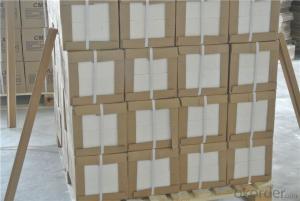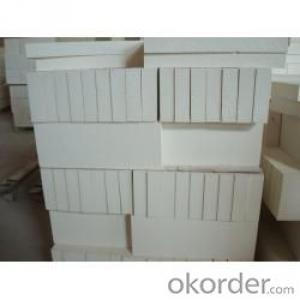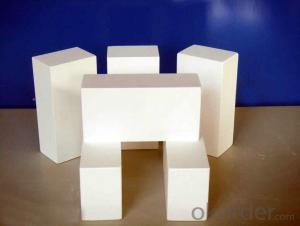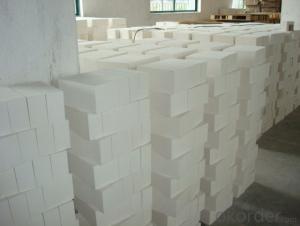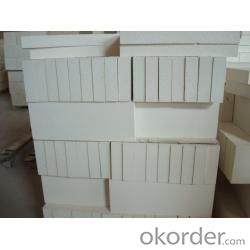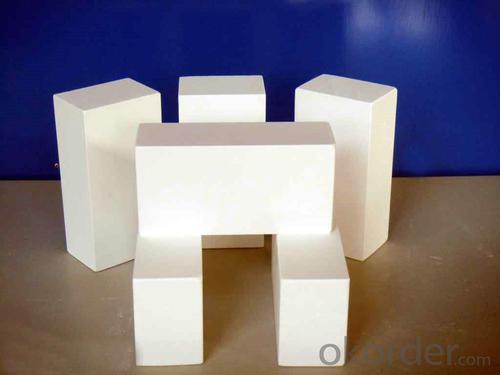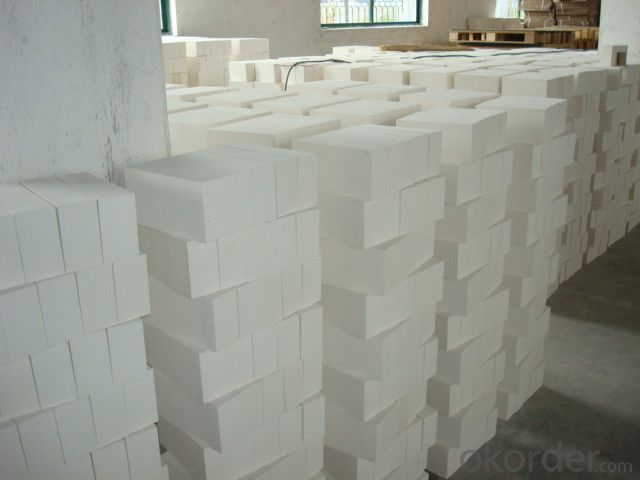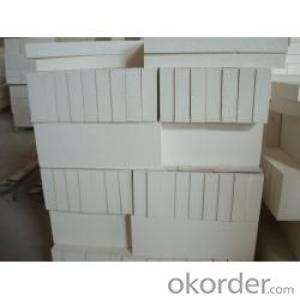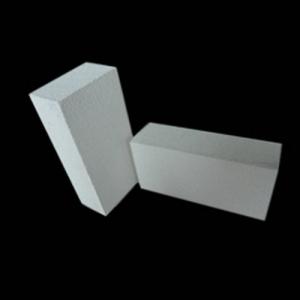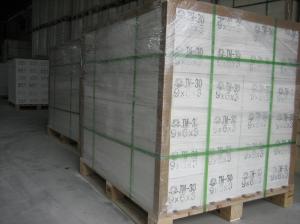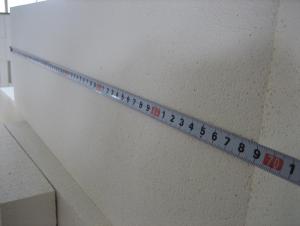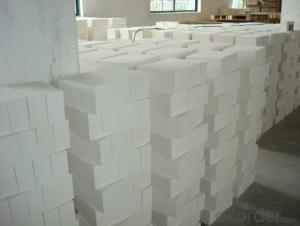Insulating Fire Brick - JM Mullite Thermal Storage Bricks Thermal Insulating Brick
- Loading Port:
- Tianjin
- Payment Terms:
- TT OR LC
- Min Order Qty:
- 2 m.t.
- Supply Capability:
- 1000 m.t./month
OKorder Service Pledge
OKorder Financial Service
You Might Also Like
Bubble Alumina Brick. We stock in both 2.5 & 3” sizes. We also carry double bump interlocking anchor styles. For use up to 1800C, these brick have excellent insulating properties as well as high hot strengths.
Insulating firebrick, we carry produces thirteen types of Insulating Fire Brick for use in applications from 2,000°F (1,093°C) to 3,200°F (1,760°C). Each type is formulated to meet specific thermal and physical requirements and after firing is machined to precise tolerances.
Made from high purity refractory clays and other ceramic raw materials, these insulating fire brick contain a carefully graded organic filler which is burned out during manufacture to give a uniform controlled pore structure.
Advantages of bubble alumina brick.
High Insulating Va
The high compressive strength of bubble alumina brick allows for self-supporting structures at elevated temperatures. Insulating fire brick are compatible with dense fire brick and add strength to the whole construction.
.
Strong
The high compressive strength of bubble alumina brick allows for self-supporting structures at elevated temperatures. Insulating fire brick are compatible with dense fire brick and add strength to the whole construction.
Low Heat Storage
Lower heat storage versus dense brick means reduced fuel costs in cyclically operated heating equipment.
Application
DJM 26 Light Weight Insulating fire brick are used for the lining of converter, alternating current arc furnace, direct Current arc furnace and the ladle slag line, etc.
Company Advantage
(1)Long Insulating Fire Brick manufacture history: 25 years manufacturer
(2)Advanced equipment
(3)Diversification of production standards: ISO ANSI FEPA JIS ASTM
Equipment
1 unit of Ceramic Abrasive (SG Abrasive) pilot production line
1 unit of high-end coated abrasives (abrasive cloth) production line
2 units of Boron Carbide production lines
Q1 What’s the transport method?
A1 FCL delivery goods with wooden pallet or wooden case by sea; If LCL delivery, must with wooden case; Sometimes need open top, flat rack or bulk cargo.
Q2 What’s the required payment term?
A2 Generally 30% TT as the prepayment, 70% TT before delivery. If need, 100% Irrevocable Letter of Credit or negotiation.
Q3 Which country are our products exported to?
A3 Apart from entire Chinese market, the US, Russia, Japan, Korea, Australia and some Southeast Asian Nations.
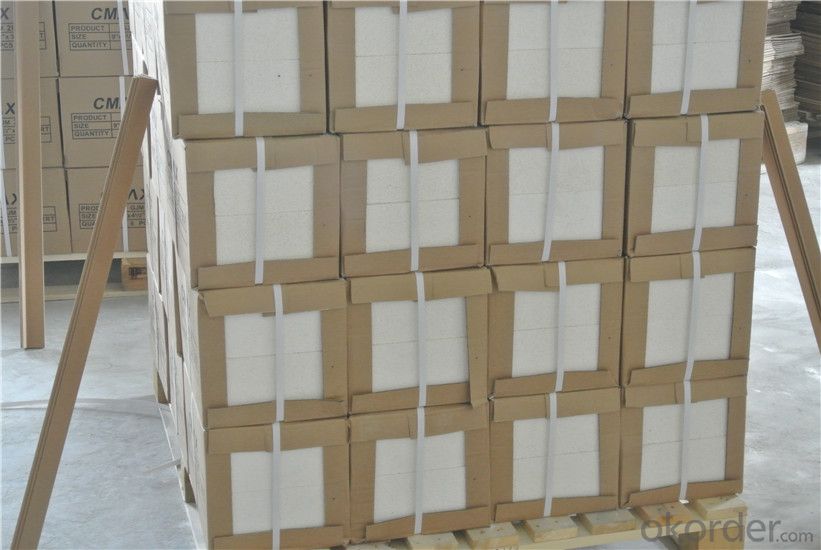

- Q: Are insulating fire bricks suitable for use in cement plants?
- Yes, insulating fire bricks are suitable for use in cement plants. They are commonly used in high-temperature applications, such as kilns and furnaces, due to their excellent thermal insulation properties and ability to withstand extreme heat. Insulating fire bricks can help optimize energy efficiency, reduce heat loss, and provide a more controlled and stable environment in cement plants.
- Q: Are insulating fire bricks suitable for insulation in boilers for steam generation?
- Insulating fire bricks are a suitable choice for insulation in steam generation boilers. Specifically designed to possess exceptional thermal insulation properties, these bricks are perfect for high-temperature applications like boilers. With their low thermal conductivity, they effectively minimize heat transfer and prevent heat loss. This insulation capability aids in maintaining optimal temperatures within the boiler, thereby enhancing energy efficiency and reducing fuel consumption. Moreover, these bricks can withstand thermal shock, making them highly resistant to the extreme temperature fluctuations encountered during steam generation. Overall, incorporating insulating fire bricks into steam generation boilers can significantly improve the system's thermal efficiency and performance.
- Q: Can insulating fire bricks be used for insulation in cement kilns?
- Insulation in cement kilns can be achieved by using insulating fire bricks. These bricks are made from lightweight materials like ceramic fibers or expanded clay, which possess high insulation properties. Their low thermal conductivity allows them to effectively reduce heat transfer and retain heat within the kiln. Cement kilns operate at extremely high temperatures, often surpassing 1,400 degrees Celsius (2,500 degrees Fahrenheit). Incorporating insulating fire bricks in the kiln helps prevent heat loss, enhances energy efficiency, and reduces fuel consumption. By creating a barrier between the hot gases inside the kiln and the surrounding environment, these bricks minimize heat escape. Additionally, insulating fire bricks exhibit remarkable resistance to thermal shocks, enabling them to withstand the severe temperature fluctuations that occur in cement kilns. This durability ensures long-lasting insulation, minimizing the need for frequent maintenance and replacement. Nevertheless, it is crucial to note that the specific type and composition of insulating fire bricks required for cement kiln insulation may vary depending on factors such as the kiln's design and operating conditions. Consulting with experts or manufacturers specializing in refractory materials is advisable to ensure the correct selection and installation of insulating fire bricks for cement kiln insulation.
- Q: Can insulating fire bricks be used in the construction of hot air generators?
- Indeed, the utilization of insulating fire bricks is applicable in the fabrication of hot air generators. Specifically engineered to endure extreme temperatures and deliver exceptional thermal insulation, insulating fire bricks are well-suited for incorporation into hot air generators. These generators necessitate insulation to uphold elevated temperatures and avert heat dissipation. By diminishing heat transfer to the surroundings, insulating fire bricks effectively enhance the efficiency and functionality of hot air generators. Furthermore, their lightweight nature, effortless installation, and long-lasting durability contribute to their widespread adoption in diverse industrial sectors, including the construction of hot air generators.
- Q: Can insulating fire bricks be used in contact with molten metal?
- Yes, insulating fire bricks can be used in contact with molten metal. Insulating fire bricks are designed to withstand high temperatures and are often used in applications involving molten metal, such as in furnaces and kilns. They have excellent thermal insulation properties and are resistant to thermal shock, making them suitable for use in these environments.
- Q: Are insulating fire bricks resistant to mold or mildew growth?
- Insulating fire bricks are resistant to mold or mildew growth. These bricks are manufactured using high-quality refractory materials, such as alumina and silica, which are not conducive to the growth of mold or mildew. Additionally, insulating fire bricks have a low porosity, meaning there is little to no moisture retention, further inhibiting the growth of mold or mildew. Therefore, insulating fire bricks are an ideal choice for applications where moisture and mold resistance are important factors.
- Q: Are insulating fire bricks suitable for commercial or industrial applications?
- Insulating fire bricks are indeed suitable for commercial and industrial applications. These bricks are specifically designed to withstand high temperatures and provide excellent thermal insulation. Due to their insulating properties, they are commonly used in various industries such as steel, cement, glass, and ceramics. In commercial applications, insulating fire bricks are often utilized in kilns, furnaces, and ovens to ensure heat retention and energy efficiency. They help to reduce heat loss, resulting in lower fuel consumption and cost savings for businesses. Additionally, their lightweight nature makes them easier to handle and install, which is advantageous in commercial settings where time is of the essence. In industrial applications, insulating fire bricks are crucial for maintaining the desired temperatures in industrial furnaces, reactors, and boilers. These bricks can withstand extremely high temperatures, making them suitable for use in harsh industrial environments. They also exhibit excellent resistance to thermal shock, meaning they can withstand rapid temperature changes without cracking or breaking. Furthermore, insulating fire bricks provide insulation against heat transfer, which helps to increase the overall efficiency of industrial processes. By reducing heat loss, they contribute to energy conservation and lower operating costs. In addition, their durability and ability to withstand the rigors of industrial operations make them a reliable choice for long-term use. Overall, insulating fire bricks are highly suitable for both commercial and industrial applications. Their exceptional thermal insulation properties, high-temperature resistance, and durability make them a preferred choice in various industries where heat retention, energy efficiency, and cost-effectiveness are paramount.
- Q: Can insulating fire bricks be used in reheating furnaces?
- Yes, insulating fire bricks can be used in reheating furnaces. Insulating fire bricks are designed to have excellent thermal insulation properties, which makes them ideal for use in high-temperature applications such as reheating furnaces. These bricks have low thermal conductivity, meaning they can effectively retain and reflect heat, resulting in energy savings and improved heating efficiency. Additionally, insulating fire bricks are lightweight and have good resistance to thermal shock, making them durable and suitable for the rapid temperature changes experienced in reheating furnaces. Overall, insulating fire bricks are a suitable choice for insulating and lining the walls of reheating furnaces, providing efficient heat retention and helping to maintain uniform temperatures throughout the furnace.
- Q: Are insulating fire bricks suitable for the insulation of chimneys?
- Yes, insulating fire bricks are suitable for the insulation of chimneys. Insulating fire bricks are specially designed to withstand high temperatures and provide effective insulation, making them ideal for use in chimneys. They have a high thermal conductivity, which means they can retain heat and prevent it from escaping, thereby improving the efficiency of the chimney. Additionally, insulating fire bricks are resistant to thermal shock, meaning they can withstand rapid temperature changes without cracking or breaking. This is particularly important in chimneys, where the temperature can fluctuate dramatically during the combustion process. Overall, insulating fire bricks are a reliable choice for chimney insulation, as they offer excellent heat retention and durability.
- Q: Are insulating fire bricks resistant to oil or chemical spills?
- Insulating fire bricks lack resistance to oil or chemical spills in general. Their main purpose is to endure high temperatures and offer insulation in various settings, such as furnaces, kilns, and fireplaces. Despite their efficient handling of heat and thermal shock, these bricks are typically composed of materials like clay, alumina, or silica, which do not possess inherent resistance to oil or chemicals. In the event of exposure to oil or chemical spills, these bricks may absorb the substances, potentially resulting in degradation or diminished performance over time. Hence, if oil or chemical resistance is a crucial requirement, it is advisable to explore alternative materials explicitly designed for such applications.
Send your message to us
Insulating Fire Brick - JM Mullite Thermal Storage Bricks Thermal Insulating Brick
- Loading Port:
- Tianjin
- Payment Terms:
- TT OR LC
- Min Order Qty:
- 2 m.t.
- Supply Capability:
- 1000 m.t./month
OKorder Service Pledge
OKorder Financial Service
Similar products
Hot products
Hot Searches
Related keywords
